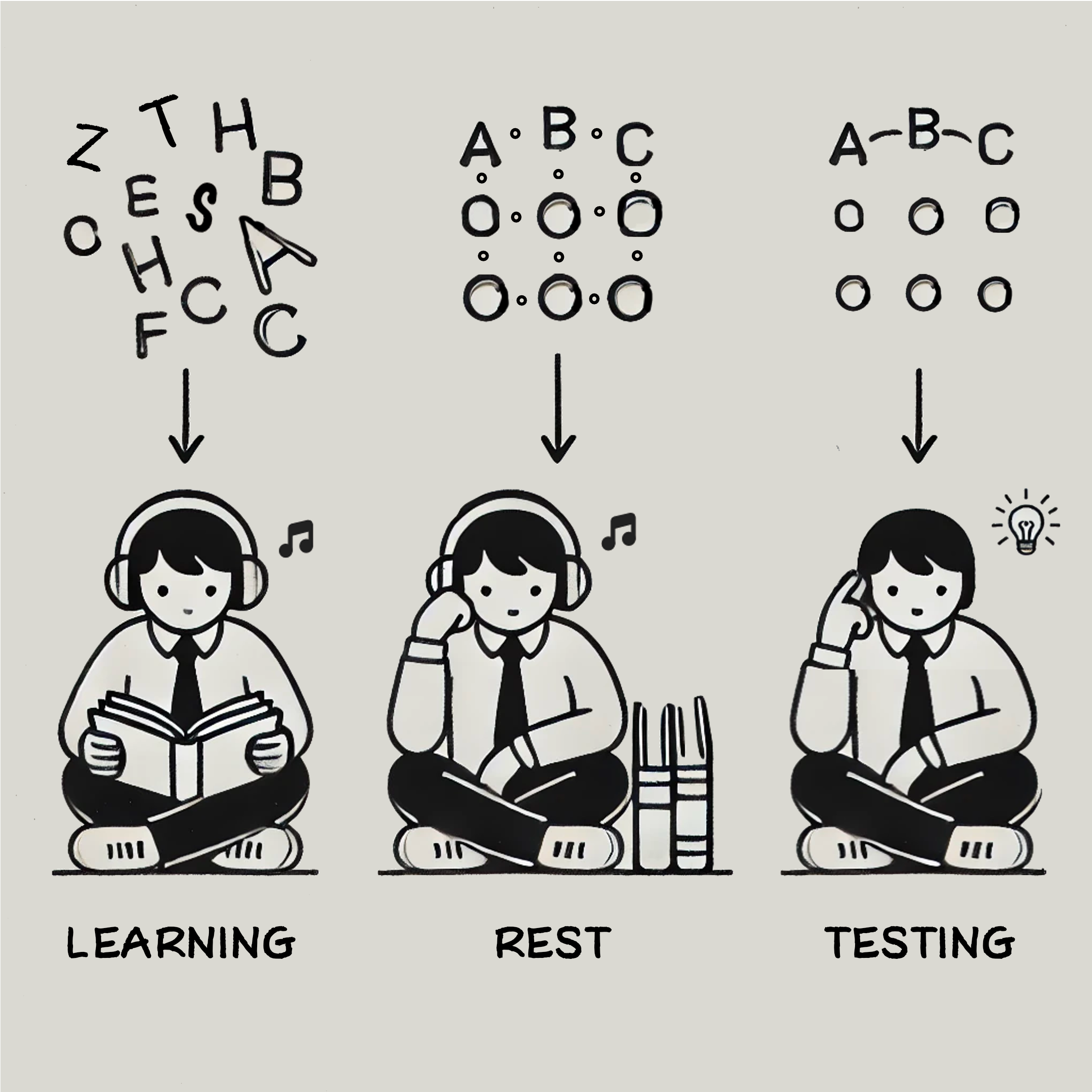Using Targeted Memory Reactivation to generate new, adaptive behaviours: code and data
Using a pre-registered task design and analysis, this dataset contains button press responses recorded during learning and test periods of a Targeted Memory Reactivation (TMR) task in humans. The task was designed to explore how contextual memory reactivation during awake rest influences consolidation of associative memory and the discovery of hidden relationships, such as non-directly trained relationships that support novel inference. The data have been used for the paper "Memory reactivation generates new, adaptive behaviours that reach beyond direct experience".
The raw behavioural data from 40 participants is provided in MATLAB (.mat) format. It also includes MATLAB (.m) and Jupyter Notebooks (.ipynb) to analyse the data to generate all figures.
Please see the paper's Methods and Results sections for details of the experiment, and prerequisite versions of libraries and environments.
We welcome researchers wishing to reuse our data to contact the creators of datasets. If you are unfamiliar with analysing the type of data we are sharing, have questions about the acquisition methodology, need additional help understanding a file format, or are interested in collaborating with us, please get in touch via email. Our current members have email addresses on our main site. The corresponding author of an associated publication, or the first or last creator of the dataset are likely to be able to assist, but in case of uncertainty on who to contact, email Ben Micklem, Research Support Manager at the MRC BNDU.

Creative Commons Attribution-ShareAlike 4.0 International (CC BY-SA 4.0)
This is a human-readable summary of (and not a substitute for) the licence.
You are free to:
Share — copy and redistribute the material in any medium or format
Adapt — remix, transform, and build upon the material for any purpose, even commercially.
This licence is acceptable for Free Cultural Works. The licensor cannot revoke these freedoms as long as you follow the license terms. Under the following terms:
Attribution — You must give appropriate credit, provide a link to the license, and indicate if changes were made. You may do so in any reasonable manner, but not in any way that suggests the licensor endorses you or your use.
ShareAlike — If you remix, transform, or build upon the material, you must distribute your contributions under the same licence as the original.
No additional restrictions — You may not apply legal terms or technological measures that legally restrict others from doing anything the licence permits.

